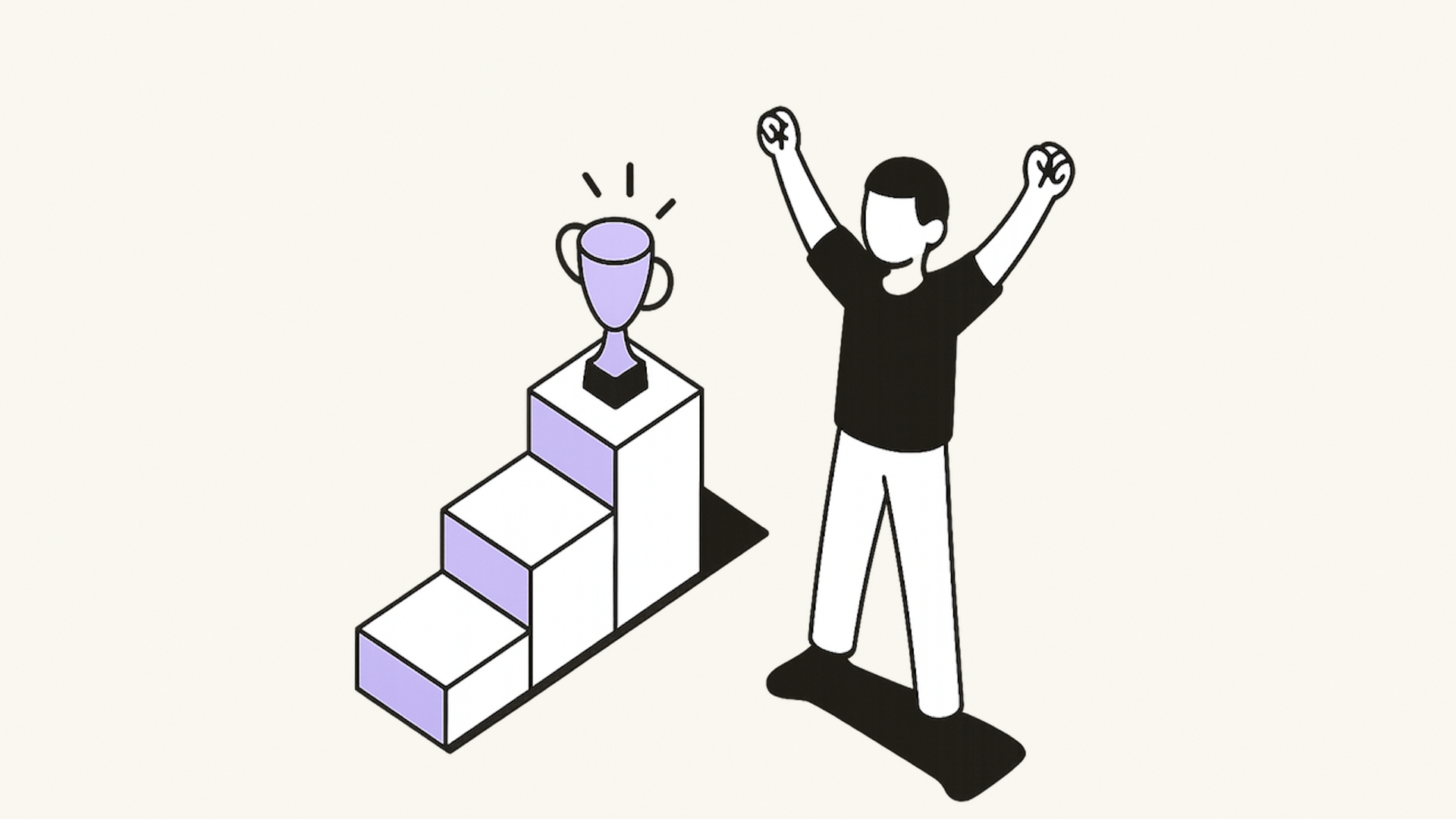When the system breaks down: How to reset your planning practice
A practical guide to resetting your ADHD planning system using small steps and supportive tools like Tiimo and Flown.
A practical guide to resetting your ADHD planning system using small steps and supportive tools like Tiimo and Flown.
Even the best planning systems sometimes break down. Especially if you're an ADHD'er or navigating executive functioning differences, or periods of low motivation, it’s normal for routines that once worked to suddenly stop feeling doable. If you’re staring at an abandoned calendar, a cluttered to-do list, or a planner gathering dust, you’re not alone and it doesn’t mean you’ve failed.
Planning systems break down, and that’s okay. You can rebuild support with the right tools, a few small steps, and a bit of flexibility. Here’s how.
Planning isn’t a one-time thing; it’s a relationship you build with yourself. And like any relationship, it can be affected by:
When your brain or life changes, your planning system needs to change with it. But most traditional advice treats planning like a static skill you either “have” or “don’t.”
In reality, most people, especially ADHD'ers, need flexible, evolving planning systems that can handle real-life messiness, not just ideal conditions.
Sometimes it’s obvious when a system isn’t working. Other times, it sneaks up on you. Here are common signs:
If any of these feel familiar, it’s a good sign your planning setup needs adjusting; not because you’re failing, but because your system is no longer matching your reality.
When a system fails, it can trigger shame spirals: “Why can’t I just keep up?”
Instead of blaming yourself, try this reframe:
This curiosity makes it easier to troubleshoot without slipping into all-or-nothing thinking.
Resetting doesn’t have to mean overhauling everything. Here’s a simple way to reboot:


Big overhauls can feel exciting but they rarely stick. Especially with ADHD, they tend to burn bright, then fizzle fast. What actually works is much quieter: a small shift, a gentle restart, a tiny experiment you can build on.
Tiny resets make space for progress without the pressure.
These aren’t shortcuts, they’re strategy. Small adjustments that rebuild trust, reduce friction, and make it easier to keep going.
Planning often unravels when it starts to feel like a performance or something to maintain rather than something that supports you. Especially for ADHD’ers and folks with executive functioning challenges, the most effective systems are the ones that offer flexibility, reduce friction, and make it easier to start again when things go off track.
Tiimo helps turn time into something visible and manageable. Flown brings gentle structure through shared focus. Together, they offer rhythm, not rigidity, a planning practice you can return to, again and again.
If you’re ready to rebuild your planning practice with tools that actually support how your brain works, Tiimo and Flown have teamed up to help.
Get 35% off new annual plans when you use code FOCUS35 and start building a system that moves with you, not against you.
A practical guide to resetting your ADHD planning system using small steps and supportive tools like Tiimo and Flown.
Even the best planning systems sometimes break down. Especially if you're an ADHD'er or navigating executive functioning differences, or periods of low motivation, it’s normal for routines that once worked to suddenly stop feeling doable. If you’re staring at an abandoned calendar, a cluttered to-do list, or a planner gathering dust, you’re not alone and it doesn’t mean you’ve failed.
Planning systems break down, and that’s okay. You can rebuild support with the right tools, a few small steps, and a bit of flexibility. Here’s how.
Planning isn’t a one-time thing; it’s a relationship you build with yourself. And like any relationship, it can be affected by:
When your brain or life changes, your planning system needs to change with it. But most traditional advice treats planning like a static skill you either “have” or “don’t.”
In reality, most people, especially ADHD'ers, need flexible, evolving planning systems that can handle real-life messiness, not just ideal conditions.
Sometimes it’s obvious when a system isn’t working. Other times, it sneaks up on you. Here are common signs:
If any of these feel familiar, it’s a good sign your planning setup needs adjusting; not because you’re failing, but because your system is no longer matching your reality.
When a system fails, it can trigger shame spirals: “Why can’t I just keep up?”
Instead of blaming yourself, try this reframe:
This curiosity makes it easier to troubleshoot without slipping into all-or-nothing thinking.
Resetting doesn’t have to mean overhauling everything. Here’s a simple way to reboot:


Big overhauls can feel exciting but they rarely stick. Especially with ADHD, they tend to burn bright, then fizzle fast. What actually works is much quieter: a small shift, a gentle restart, a tiny experiment you can build on.
Tiny resets make space for progress without the pressure.
These aren’t shortcuts, they’re strategy. Small adjustments that rebuild trust, reduce friction, and make it easier to keep going.
Planning often unravels when it starts to feel like a performance or something to maintain rather than something that supports you. Especially for ADHD’ers and folks with executive functioning challenges, the most effective systems are the ones that offer flexibility, reduce friction, and make it easier to start again when things go off track.
Tiimo helps turn time into something visible and manageable. Flown brings gentle structure through shared focus. Together, they offer rhythm, not rigidity, a planning practice you can return to, again and again.
If you’re ready to rebuild your planning practice with tools that actually support how your brain works, Tiimo and Flown have teamed up to help.
Get 35% off new annual plans when you use code FOCUS35 and start building a system that moves with you, not against you.
A practical guide to resetting your ADHD planning system using small steps and supportive tools like Tiimo and Flown.
Even the best planning systems sometimes break down. Especially if you're an ADHD'er or navigating executive functioning differences, or periods of low motivation, it’s normal for routines that once worked to suddenly stop feeling doable. If you’re staring at an abandoned calendar, a cluttered to-do list, or a planner gathering dust, you’re not alone and it doesn’t mean you’ve failed.
Planning systems break down, and that’s okay. You can rebuild support with the right tools, a few small steps, and a bit of flexibility. Here’s how.
Planning isn’t a one-time thing; it’s a relationship you build with yourself. And like any relationship, it can be affected by:
When your brain or life changes, your planning system needs to change with it. But most traditional advice treats planning like a static skill you either “have” or “don’t.”
In reality, most people, especially ADHD'ers, need flexible, evolving planning systems that can handle real-life messiness, not just ideal conditions.
Sometimes it’s obvious when a system isn’t working. Other times, it sneaks up on you. Here are common signs:
If any of these feel familiar, it’s a good sign your planning setup needs adjusting; not because you’re failing, but because your system is no longer matching your reality.
When a system fails, it can trigger shame spirals: “Why can’t I just keep up?”
Instead of blaming yourself, try this reframe:
This curiosity makes it easier to troubleshoot without slipping into all-or-nothing thinking.
Resetting doesn’t have to mean overhauling everything. Here’s a simple way to reboot:


Big overhauls can feel exciting but they rarely stick. Especially with ADHD, they tend to burn bright, then fizzle fast. What actually works is much quieter: a small shift, a gentle restart, a tiny experiment you can build on.
Tiny resets make space for progress without the pressure.
These aren’t shortcuts, they’re strategy. Small adjustments that rebuild trust, reduce friction, and make it easier to keep going.
Planning often unravels when it starts to feel like a performance or something to maintain rather than something that supports you. Especially for ADHD’ers and folks with executive functioning challenges, the most effective systems are the ones that offer flexibility, reduce friction, and make it easier to start again when things go off track.
Tiimo helps turn time into something visible and manageable. Flown brings gentle structure through shared focus. Together, they offer rhythm, not rigidity, a planning practice you can return to, again and again.
If you’re ready to rebuild your planning practice with tools that actually support how your brain works, Tiimo and Flown have teamed up to help.
Get 35% off new annual plans when you use code FOCUS35 and start building a system that moves with you, not against you.
When you're ready, try Tiimo and make structure a little easier.


Living with both ADHD and Autism can feel like a creative tug of war. This piece explores how to turn hyperfocus, distraction, and rest into allies for your creativity.

It’s easy to lose sight of what truly matters when your attention is constantly pulled in a dozen directions. This article explores three simple, practical tools to help you refocus: The Eisenhower Matrix, Weekly Focus, and Weeknotes.

Losing motivation? You’re not alone. You start the day with good intentions… and then? You blink, and it’s 3 PM. You’ve been busy, but nothing’s finished. That motivation spark? Gone. This guide shares two simple review techniques: Winventory and Progress Check and one feel-good habit called Tiny Rewards. Together, they can help you build momentum, stay consistent, and actually feel proud of your progress.